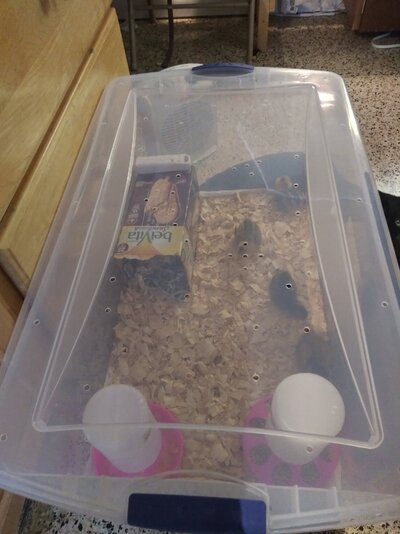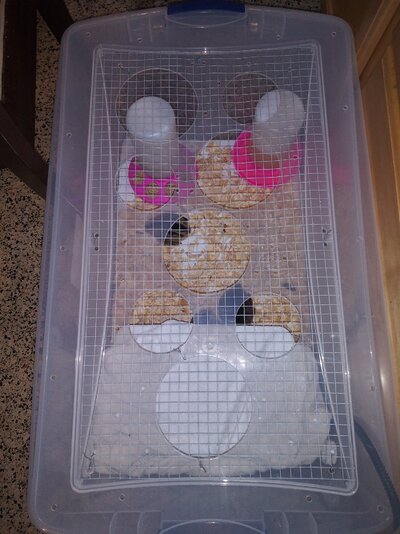Harmoni
Songster
This is our current setup. I have a small space heater blowing on the bin keeping it between 82-85 degrees. I have a heat plate coming today. We orginally had a heat lamp until I read how bad those were.
I will be adding a bowl of grit/ sand bath bowl.
I feel like I am missing something.
Also, advice on waterers. I have a nipple one outside with my big girls and they hate it. I'm assuming I should introduce a nipple waterer to the chicks sooner rather than later, right?
I will be adding a bowl of grit/ sand bath bowl.
I feel like I am missing something.
Also, advice on waterers. I have a nipple one outside with my big girls and they hate it. I'm assuming I should introduce a nipple waterer to the chicks sooner rather than later, right?







 I wonder if you could take a piece of 1/2-inch hardware cloth and screw it into your lid (or a new lid, if needed) Hardware cloth, properly secured, is very sturdy. If you used two smaller pieces of cloth (instead of just one larger piece), it might also allow the lid to maintain a more rigid integrity. Or you could screw braces of wood to prevent the lid from bowing.
I wonder if you could take a piece of 1/2-inch hardware cloth and screw it into your lid (or a new lid, if needed) Hardware cloth, properly secured, is very sturdy. If you used two smaller pieces of cloth (instead of just one larger piece), it might also allow the lid to maintain a more rigid integrity. Or you could screw braces of wood to prevent the lid from bowing.